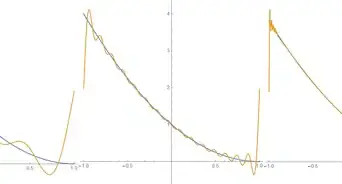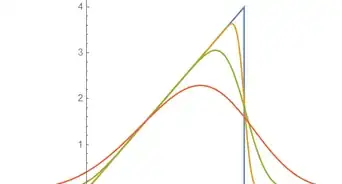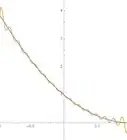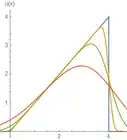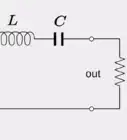wikiHow is a “wiki,” similar to Wikipedia, which means that many of our articles are co-written by multiple authors. To create this article, volunteer authors worked to edit and improve it over time.
This article has been viewed 15,614 times.
Learn more...
Legendre's differential equation
is an important ordinary differential equation encountered in mathematics and physics. In particular, it occurs when solving Laplace's equation in spherical coordinates. Bounded solutions to this equation are called Legendre polynomials, an important orthogonal polynomial sequence seen in the multipole expansions of electrostatics. It is in this context that the argument of the solutions is and therefore motivates us to look for solutions that are bounded by so that every point is regular.
Because Legendre's equation contains variable coefficients and is not the Euler-Cauchy equation, we must resort to finding solutions using power series. Series methods usually involve a bit more algebra, but are still fairly straightforward.
Steps
-
1Substitute the power series ansatz. This ansatz takes on the form where are coefficients to be determined. Its first and second derivatives are easily found as and
-
2Group all terms under a common sum. We proceed by first rewriting the first term so that there is an inside the summation (remember that is a dummy index). Then we explicitly write out all the and terms.
- Notice the importance of the constant, which has the same form as the contribution.
Advertisement -
3Set the coefficients of each power to 0. In linear algebra, the sequence of powers can be thought of as linearly independent functions spanning a vector space. The linear independence demands that each coefficient of a power term has to vanish in order for the equality to hold true.
-
4Obtain the recurrence relation. The recurrence relation is an important relation and is the goal of every power series solution method. The recurrence relation, together with limiting cases, gives the value of every coefficient in terms of and
- Note that the first line is redundant - it came about from our handling of the series to begin at so those coefficients are written out explicitly.
- The most important property in the recurrence is the fact that the even and odd contributions are decoupled - the coefficient is determined by the coefficient, which must be both even or both odd. This means that we may formulate our solution in terms of even and odd functions, which can be very useful.
-
5Choose for certain values of . The coefficients and are the two constants resulting from the fact that Legendre's equation is a second-order differential equation. Because the recurrence relations give coefficients of the next order of the same parity, we are motivated to consider solutions where one of or is set to 0. For example, if then it follows that all odd terms vanish, and the solution is an even function; vice versa. The other important observation is the fact that the series can be bounded with a suitable choice of The obvious choice here is Then all terms vanish in the sum.
- For example, let's make a list of cases where Going through the possible values of the series truncates to the order term.
- If we have the odd functions.
- We could continue on like this to retain more terms.
- For example, let's make a list of cases where Going through the possible values of the series truncates to the order term.
-
6Normalize the bounded solutions. By convention, the constants are set so that for all These constants are very easy to find, and this uniquely fixes each solution. The resulting polynomials are called the Legendre polynomials where is called the degree of the polynomial. Below, we list the first few Legendre polynomials.


![[-1,1],](./images/1686707956-d9c504e0d448149f190679df28cd10275a67f117.webp)















































